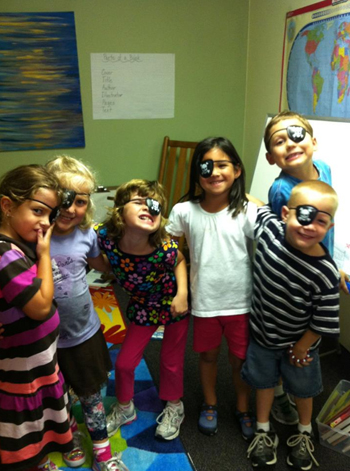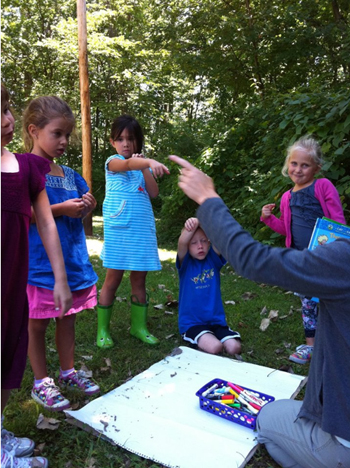The kindergarten students at BrightPath Active Learning in Westerville, OH, would have told you the week in early September was Pirate Week. The teachers knew the real story: the students were actually learning math, social studies, language, geography and high-level reasoning.
Two mapping activities filled out a week of pirate games, costumes and fun.

An indoor mapping activity was an art project at its core. The BrightPath kids had to make treasure maps, but they couldn’t just scribble an X on a paper with a squiggly line leading to it. Instead, BrightPath Art Specialist Michelle Bonnette instructed the students to draw a map to their own gold doubloon, so another students could find it using the map.
As you might expect, this required a lot of thought and some groundwork that had been laid earlier in the week.

Students were already familiar with big words such as “navigate” and “landmark” and had been pointing out landmarks in their journeys around the school.

The students also had to understand the relationship between objects in space, and how to represent that on a piece of paper. They also learned the cardinal directions.

The students also had to understand the relationship between objects in space, and how to represent that on a piece of paper. They also learned the cardinal directions.

Students engaged in a scavenger hunt, looking for clues and finding locations. Their critical thinking skills were stretched again as they spent time looking at the map, seeing things in real life, and comparing the two.
“They did a lot of learning about it and putting it to paper themselves,” said Owdom. “This pole. That tree. They learned spatial reasoning and geography; the idea that models and maps represent places and the relative positions of things.”
The students also reinforced their understanding of direction and distance terms, required for social studies: in front of, behind, next to, etc.
Owdom said the small class size and the enrichment staff, including an art teacher and naturalist, were critical in making the activities come to life.
“At other schools there are a lot of limitations about what you can do in the setting,” she said. “We have a lot of flexibility here.”
Owdom related her experience in a traditional classroom, where it can take weeks to get to know all the students, and opportunities for engaging in real dialogue and teachable moments with students are rare.
“We can talk to them so much more often and they can talk to us so much more often,” she said.
“Within a week we knew all the kids well.”
Owdom said at BrightPath, the students may excel in different areas, or be at different levels with their core skills, but they are all receiving the same amount of attention to help them succeed.



